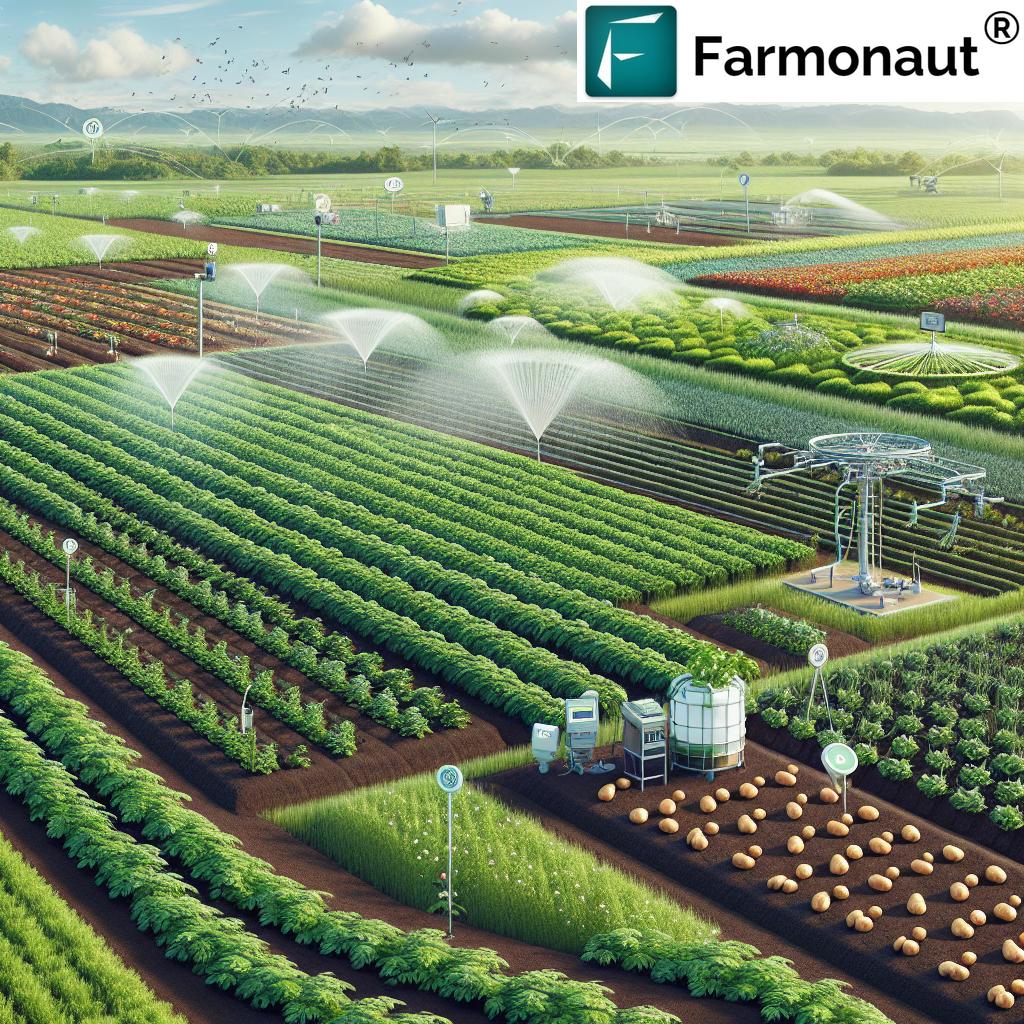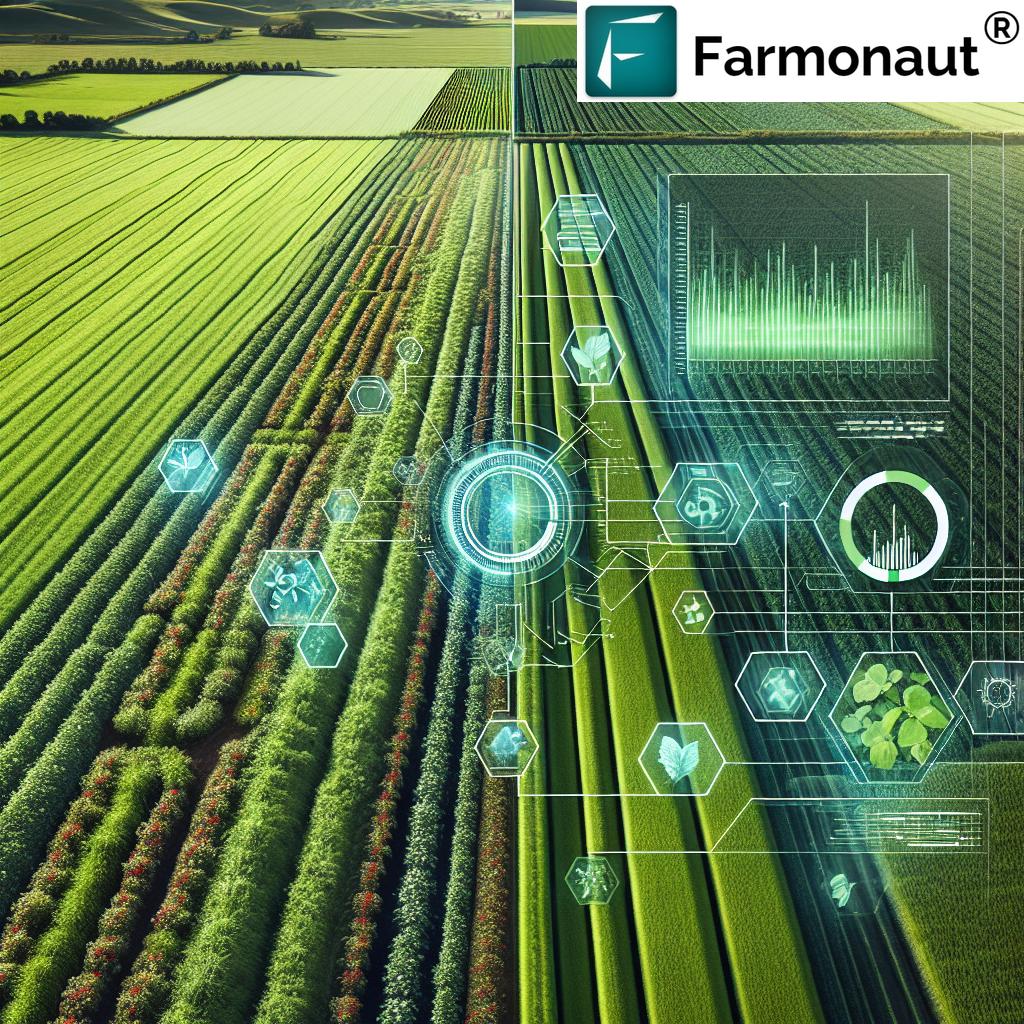Central Asia Agriculture: 2025 Challenges & Solutions
“By 2025, Central Asia may face up to 30% less water availability for agriculture due to climate change.”
Introduction to Central Asia Agriculture in 2025
Central Asia agriculture is at a pivotal moment as we move further into 2025. This dynamic region, encompassing Kazakhstan, Uzbekistan, Turkmenistan, Kyrgyzstan, and Tajikistan, supports millions of rural livelihoods and remains a cornerstone of the regional economy. However, the sector faces a complex interplay of climate change, water scarcity, and sustainable development challenges.
The landscape of Asia agriculture is rapidly transforming, and Central Asia is both shaped by—and helping to redefine—what sustainable farming can mean in the 21st century. Agriculture in Asia cannot be studied without considering the critical issues and innovative solutions rising in Central Asia.
Central Asia: Regional Overview & Significance in Asia Agriculture
Central Asia agriculture is vital to the overall Asia agriculture narrative. As an ecologically diverse region, Central Asia has historically been defined by its reliance on irrigated agriculture, especially in the fertile valleys created by the Amu Darya and Syr Darya rivers.
- The sector continues supporting millions of people and underpins economic activity across the five Central Asian countries.
- Key staple crops include wheat, cotton, fruits, and vegetables—crucial for both food security and trade.
- Within agriculture Asia, Central Asia stands out for its unique blend of environmental challenges, historical legacy, and emerging opportunities for sustainable growth.
The agricultural sector across Kazakhstan, Uzbekistan, Turkmenistan, Kyrgyzstan, and Tajikistan is characterized by:
- Large-scale irrigated farming, especially in lowland plains
- Strong dependence on river water from upstream countries
- Climate-vulnerable landscapes, particularly in mountain and steppe zones
- A history of state-planned agriculture, followed by land tenure and farming reforms
Central Asia Agricultural Ecosystem & Reliance on Irrigated Farming
Central Asia’s agricultural livelihood is deeply tied to its vast river valley systems, especially the Amu Darya and Syr Darya. The region’s reliance on irrigation has shaped both its agricultural success and the challenges it faces in 2025.
- Vast River Valleys – The Amu Darya and Syr Darya rivers support massive irrigation networks, enabling production in otherwise arid or semi-arid climates.
- Staple Crops – Key crops (wheat, cotton, fruits, vegetables) are produced almost exclusively through irrigation, making water access critical.
- Vulnerability – Heavy dependency on surface water means that shifts in river flow or upstream usage directly impact yields, food security, and rural incomes.
The agricultural system in Central Asia is a prime example of both the power and peril of irrigation-dependent development. Modernizing irrigation infrastructure and fostering water-saving agricultural practices is vital if the sector is to remain viable in the coming years.
Critical Challenges: Water Scarcity, Climate Change, and Environmental Degradation
By 2025, Central Asia agriculture faces mounting challenges from multiple fronts. Chief among these are climate change, water scarcity, and environmental pressures exacerbated by outdated or unsustainable agricultural practices.
Water Scarcity: The Primary Bottleneck for Central Asia Agriculture
- Up to 30% Decrease in Water Availability: Climate models suggest agriculture may face dramatic reductions in water supply by 2025.
- Upstream Water Use: Competition over water allocation between countries, and even sectors, is leading to increased regional tensions.
- Inefficient or Aging Infrastructure: Much of Central Asia’s irrigation infrastructure is old, leaky, or poorly optimized—leading to significant losses before water even reaches fields.
- Salinization & Land Degradation: Unsustainable water management is contributing to the salinization of soils, threatening long-term agricultural productivity.
Climate Change: Intensifying Pressure on Crop Yields and Livelihoods
- Rising Temperatures & Heatwaves: Central Asia’s average temperatures are forecasted to increase at rates above many global averages, affecting crop and pasture viability.
- Erratic Precipitation Patterns: Changing rainfall seasons make it harder to plan farming cycles, affecting both staple crops and higher-value horticultural products.
- Glacier Retreat: Many rivers in Central Asia are fed by glaciers that are rapidly shrinking, risking severe water shortfalls in the coming decades.
- Food Security Impacts – Lower yields, less predictable harvests, and pastoral decline hit rural incomes and increase the risk of food shortages, especially for vulnerable communities.
- Fragile Ecosystems – Intensified use of remaining resources can tip the balance in already delicate steppe, mountain, or desert ecosystems.
“Over 60% of Central Asia’s farmland is at risk of degradation without sustainable farming practices by 2025.”
Comparative Table: Key Agricultural Challenges & Solutions by Country
To understand the complex interplay of environmental, water, and development challenges across Central Asia, see the following comparative analysis. It provides an at-a-glance summary of principal concerns in each country, the current or proposed solutions, and projected outcomes by 2025 and beyond.
| Country | Impact of Climate Change (2025 Est.) | Water Scarcity Level (2025 Est.) | Principal Challenge | Implemented / Suggested Solution | Estimated Outcome / Benefit |
|---|---|---|---|---|---|
| Kazakhstan | Warming by +1.7°C since 1970 Increase in drought frequency (2025) |
Moderate-High (20% projected reduction in river flow) |
Overreliance on conventional wheat, soil erosion | Crop diversification, improved soil management, expansion of precision irrigation | Yield resilience, soil fertility improvement, better water efficiency |
| Uzbekistan | Frequent droughts Temperature rise of 2°C (2025) |
High (Up to 30% lower supply vs. demand in main valleys) |
Salinization, inefficient irrigation, cotton monoculture | Modernize irrigation, rotate crops, promote alternative fibers/fruits | Increase crop diversity, reduced land/water degradation |
| Turkmenistan | Extreme temperatures, increased evaporation | Very High (Major deficit along Amu Darya) |
Arid climate, poor water allocation, desertification | Drip irrigation, remote water monitoring, drought-resistant crops | Reduced wastage, higher yields per water input |
| Kyrgyzstan | Mountain glaciers shrinking (15-25% loss by 2025) | Moderate (Seasonal tensions and variability) |
Inefficient cropping, post-Soviet fragmentation, pasture overuse | Invest in cold-resistant varieties, digital extension, pasture management | Sustainable livestock, improved smallholder incomes |
| Tajikistan | Glacial rivers at risk, greater rainfall volatility |
Moderate-High (Seasonal drought risk) |
Lack of diversification, fragile rural economy | Introduce fruits/vegetables, strengthen cooperatives, solar irrigation tech | Food security, income stability, innovation adoption |
This table summarizes how central asia agriculture challenges – from climate shifts to water scarcity to sustainable farming practices – are being met by each country’s unique response within the region.
Farming Practices, Food Security & Rural Livelihoods in 2025
Asia agriculture and particularly Central Asia agriculture remain deeply interconnected with rural livelihoods, food security, and economic stability. In 2025:
- Over 60% of Central Asia’s workforce is agrarian-based, especially in Uzbekistan and Tajikistan, making farming the backbone of the rural economy.
- Legacy of Soviet-Era Practices: The structural transformation from state farms to fragmented holdings continues to impact productivity and land management. Fragmented land ownership can lead to lower efficiency, but land consolidation and support for cooperative farming are helping to revitalize rural infrastructure.
- Food Security: Crop yield vulnerabilities mean food imports are rising. Diversification into higher-value horticultural and livestock products is viewed as essential for resilience.
- Women in Agriculture: Women are a significant component of the agricultural labor force in Central Asia, yet they often lack equal access to financing, land, and new technologies, which constrains rural development.
- Soil Degradation and Salinity: Overgrazing and water mismanagement contribute to declining pasture and soil quality, eroding the long-term potential of both large and smallholdings.
Achieving sustainability in farming practices is not just a question of environmental stewardship, but of economic survival and social stability for millions across the Central Asia region.
Advanced Technologies & Precision Agriculture in Central Asia
Technological adoption is reshaping agriculture in Asia. In Central Asia, the rise of precision farming tools, digital platforms, and remote sensing is a game-changer for resilience and sustainable growth.
- Precision Agriculture Tools: Fertilizer and water usage can now be closely matched to plant needs, reducing waste and saving costs—especially vital where water scarcity is severe.
- Satellite Monitoring: Real-time satellite imagery helps farmers track crop health, soil quality, irrigation status, and even pest outbreaks remotely.
- Digital Advisory Platforms: Mobile devices and web apps deliver tailored agronomy advice to remote rural communities—empowering smallholders and mitigating the disadvantage of isolation.
- Blockchain Traceability: Provenance and authenticity tracking is rising in importance amidst food security concerns and global demand for traceable products.
Barriers Remain:
- Smallholder farmers often lack capital and technical know-how to adopt these advances at scale.
- Access to digital infrastructure and market information remains uneven—especially in remote valleys or mountainous zones.
Unlocking the region’s potential is only possible by combining new technologies with targeted education, access initiatives, and supportive government and private sector policies.
Farmonaut’s Role: Satellite Data, Resource Management & Sustainable Growth
We at Farmonaut recognize the critical role of affordable, accessible satellite technology in transforming agriculture in Asia and, more specifically, Central Asia agriculture. Our platform empowers farmers, governments, and businesses with:
- Multispectral Satellite Monitoring for early detection of crop stress, water shortages, and land degradation across vast fields and remote regions.
- AI-Powered Jeevn Advisory System offering actionable, real-time advice on irrigation scheduling, input usage, and weather forecasts for farmers and policy-makers.
- Carbon Footprinting Solutions: We help government and agribusinesses track and manage their climate impact. This is essential for aligning with sustainability and regulatory targets in 2025 and beyond.
- Blockchain-Based Product Traceability via Farmonaut Traceability, enhancing transparency and food product trust in domestic and export markets.
- API Integration through our API and Developer Docs, so agritech innovators and large agricultural enterprises can embed remote-sensing insights directly into operational systems.
Our subscription-based platform, available for web, Android, and iOS devices, ensures that farmers and businesses—large and small—can access real-time agricultural intelligence for remote locations. This enables:
- Reducing costs and losses through precise monitoring
- Enhancing productivity via optimal resource allocation
- Supporting compliance with emerging sustainability and traceability standards
Our latest Large Scale Farm Management solution (learn more here) is designed for big farms and cooperatives managing thousands of hectares across fragmented landscapes. This tool allows you to map, monitor, and optimize expansive operations using the latest remote-sensing data — helping to bring together previously fragmented holdings and scale sustainable practices.
Those focusing on forest plantation, agroforestry, and soil health can access Crop Plantation & Forest Advisory features through our dedicated app portal, which delivers AI-driven decision tools relevant for Central Asia’s climate and ecology challenges.
For those managing large fleets of machinery and vehicles in agriculture, mining, or logistics, our Fleet Management platform enables real-time resource allocation and route optimization for rural and fragmented landscapes.
Trade, Infrastructure & Market Integration Across Central Asia
Infrastructure development and trade integration are crucial for unlocking the full potential of Central Asia agriculture in 2025.
- Improved Logistics & Corridors: Efforts driven by regional frameworks and international initiatives are expanding access to global markets for agricultural products and minimizing the penalties of being landlocked.
- Cold Chain & Storage: Investments in modern cold chains, storage warehouses, and processing facilities are reducing post-harvest losses and improving food supply chain resilience.
- Market Information Access: Enhanced market platforms (including Farmonaut’s digital tools) are delivering real-time commodity prices, weather alerts, and logistics data—benefiting both large-scale agribusiness and smallholders.
Regional Value Chains are emerging in horticulture and agri-processing, enabling small and medium agricultural producers from countries like Uzbekistan, Tajikistan, and Kyrgyzstan to access international markets and drive rural growth.
- Organic & Eco-Friendly Demand: Rising consumer demand—both regionally and internationally—for sustainably produced, traceable Central Asian fruits, nuts, and other products is providing a new market segment focused on sustainability.
- Blockchain Traceability: Farmonaut Traceability helps build trust and unlock premium markets for verified, sustainable food products from Central Asia.
Policy Frameworks, Regional Cooperation & Future Outlook
The success of central asia agriculture in facing challenges of 2025 and beyond will depend on strengthened policy frameworks, research, innovation, and regional cooperation.
Emerging Policy Priorities
- Water Sharing Agreements: Cross-border water management frameworks are vital for diffusing upstream-downstream tensions, ensuring fair allocation, and supporting basin-wide adaptation efforts.
- Climate Adaptation Subsidies: National policies increasingly support farmers to adopt drought-resistant crop varieties, invest in precision irrigation, and diversify their income streams.
- Support for Research & Extension Services: A renewed focus on regional agricultural research and the revitalization of extension networks will help close the technology and knowledge gap for smallholders.
- Investment in Sustainable Land and Soil Management: Policy frameworks must incentivize better soil stewardship, integrated pest management, and regenerative agricultural practices.
Key Recommendations for 2025 and Beyond
- Modernize irrigation and promote water-saving agricultural techniques to combat scarcity and ensure food security.
- Pursue land consolidation, tenure reform, and support for cooperatives to boost efficiency—and access to financing for all, including women.
- Expand use of advanced technology (satellite imagery, precision tools, digital platforms) for better resource and risk management.
- Integrate product traceability and carbon accounting into all value chains, meeting future export, consumer, and climate requirements.
- Strengthen research, extension, and digital literacy services in rural areas, targeting gaps for smallholder and marginalized groups.
- Deepen regional cooperation on water sharing, climate adaptation, and market integration for long-term resilience.
Frequently Asked Questions – Central Asia Agriculture 2025
What are the top challenges facing Central Asia agriculture in 2025?
Water scarcity, climate change (including rising temperatures and erratic precipitation), land degradation, and fragmented land holdings are the foremost challenges. In addition, outdated infrastructure and limited access to financing/technology hinder sectoral growth.
Which countries are the most impacted by water scarcity in the region?
Turkmenistan and Uzbekistan face the highest immediate water risks due to dependence on Amu Darya and Syr Darya river systems, combined with inefficient allocation and competing upstream-use claims.
How can advanced technology help Central Asian farmers?
Advanced technologies such as satellite crop monitoring, precision irrigation systems, and digital advisory platforms enable farmers to optimize resource use, detect stressors early, and adapt to climate uncertainties—improving yields and profitability.
What opportunities exist for sustainable development and regional cooperation?
There are significant opportunities in regenerative, climate-adaptive farming, digital supply chains, regional agri-value chains, and eco-friendly product exports. Enhanced cooperation on water sharing and trade, combined with traceable and sustainably certified agricultural products, will unlock new growth.
How does Farmonaut support Central Asia’s agriculture sector?
We provide real-time, satellite-based monitoring and advisory solutions for farmers and organizations across Central Asia. Our tools include multispectral imagery, Jeevn AI advisory, blockchain traceability, fleet management, and environmental impact monitoring, all designed to improve productivity, sustainability, and traceability at affordable prices. Subscription options are available for every scale of operation.
Where can I find more information or get started with Farmonaut?
Visit our web app to sign up, or download our solution for Android or iOS. For software integration, consult our API documentation.
Conclusion: Achieving Agricultural Resilience & Opportunity in 2025 and Beyond
Central Asia agriculture in 2025 stands at a crossroads. The sector continues to face significant challenges: water scarcity, climate change, land degradation, and technological gaps. However, it is also a region rich in opportunities for sustainable development, advanced technological adoption, and regional cooperation.
- The drive to modernize infrastructure, adopt digital platforms, and embrace regenerative practices is already underway across Kazakhstan, Uzbekistan, Turkmenistan, Kyrgyzstan, and Tajikistan.
- Governments, businesses, and rural communities play a joint role in creating resilient food systems—and in unlocking new economic opportunities through sustainable, traceable agricultural products for Asian and global markets.
- The role of advanced technologies (such as Farmonaut’s) is to bridge information, efficiency, and sustainability gaps, empowering every actor from smallholders to policymakers.
- With the right blend of technology, investment, coordinated policy, and farmer empowerment, Central Asia’s agricultural sector can deliver not only food security, income, and ecological health, but also resilience against future shocks—turning challenges into drivers of growth.
For those seeking affordable, scalable, and actionable tools to shape a new future for agriculture, explore Farmonaut’s solutions and be part of the transformation!
























